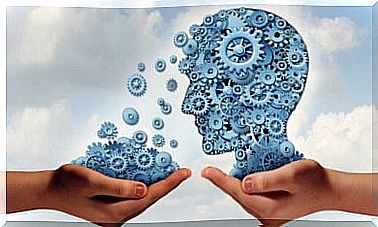What Is Paranoia And Why Is It Harmful?

What exactly are paranoia? Before we answer this question, it is good to mention that in psychiatry and psychoanalysis, things are seen in slightly different ways. The concept was first mentioned in psychiatry, and people first believed it to be just one form of madness.
Over time, in the field of psychiatry, she was given a different diagnosis. This was due in part to experts beginning to see it as part of other mental illnesses, such as schizophrenia. Thus, it was no longer considered a disease in its own right, but rather became a symptom of other diseases. According to the diagnosis system for mental health and behavioral disorders, the disease most closely resembling it is delusional disorder.
In psychoanalysis, it was classified in a completely different way. Sigmund Freud considered it one form of neurosis that resulted from obsession. Later, thanks to Schreber’s case, he began to consider it a form of psychosis. Then there was Lacan, who actually wrote his dissertation based on the case of Aimée: his improved paranoia.
A little bit of paranoia history

For a long time, the term paranoia was used as a synonym for madness. The German-born Kahlbaum was the first person to refer to it as his own problem in 1863. Kraft-Ebing expanded the concept a little further in 1879, describing it as a “mental alienation that affects mainly judgment and reasoning”.
Although attempts were made to describe this mental problem in several other ways, Kraepelin’s theory from 1889 stood out from the crowd. From now on, paranoia was understood as a kind of disorder in which a person has delusional thoughts without any other significant symptoms.
It was not until 1987 that it was replaced in the DSM by other syndromes such as “delusional disorder” and “paranoid personality disorder”.
Paranoia in psychoanalysis
Sigmund Freud began to speak of paranoia, without defining it completely, in his book Neuro-Psychoses of Defense (1894). Freud’s psychoanalysis focused mainly on neurosis. At first, Freud combined paranoia with projection, but he did not draw any further conclusions from it.
Neisser later fundamentally shaped the way paranoia is seen in psychoanalysis as a mental illness. He said it was basically a “ unique way of interpreting”. A paranoid person feels that all the things he sees and hears relate to him in one way or another.
Jacques Lacan took this concept much further. In one text from 1958, in which he talks about the case of Freud’s Schreber, he defines paranoia as “recognizing pleasure in the place of another person”.
Lacan was a cryptic writer and is difficult to understand. Simply put, his statement is like a motto for paranoia: “ The other enjoys me”.

Clarification of the concept of paranoia
In psychoanalysis, a paranoid person is not just a suspicious person, as we usually think. The actions of such a person derive from two perceptions inhabited by him. The first is that some kind of “evil” has been unleashed and that he will become its victim. The second is that world events are related to him.
A paranoid person interprets the world through these two lenses based on his paranoia. Paranoia is basically an absurd imagination. The paranoia imagination is that something evil is haunting a person. For example: “Evil is taking over my mind”.
A paranoid person interprets everything he sees through that imagination. Thus, any normal thing, such as the disappearance of a thing, is evidence to him that he is being bullied by those evil spirits, space aliens, demons, or the like.
This is the motto Lacan talked about: “The other enjoys me”. With this, the person feels “passivated”; he transfers everything that happened to him to that “Other”: “It wasn’t me, he did it!”. This belief and delusion can lead to minor problems such as jealousy or more serious problems such as the Aimée case.









